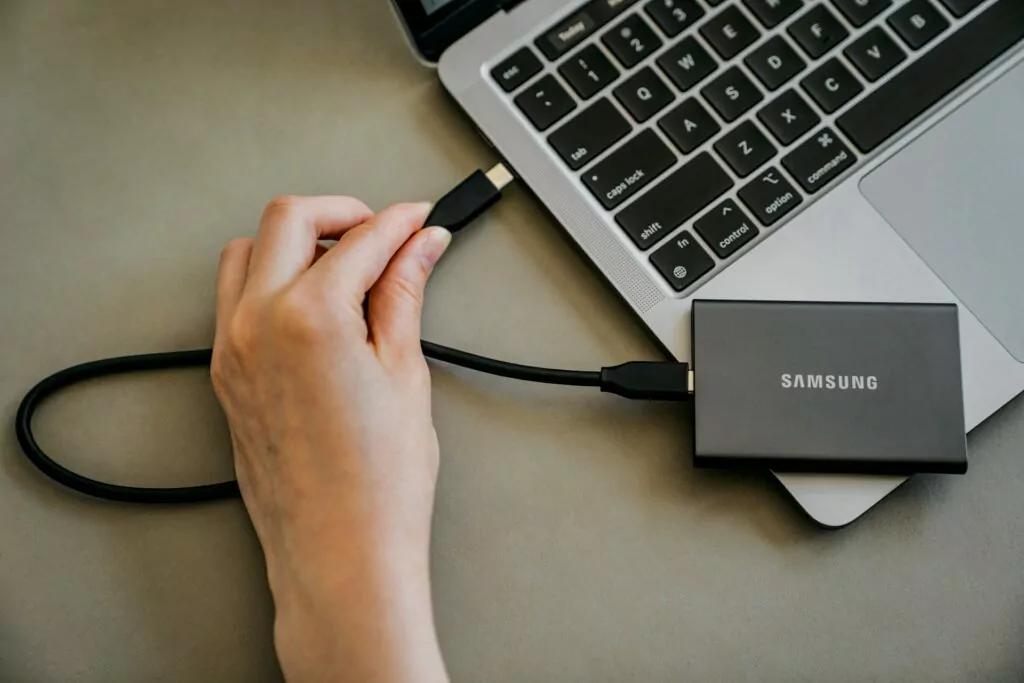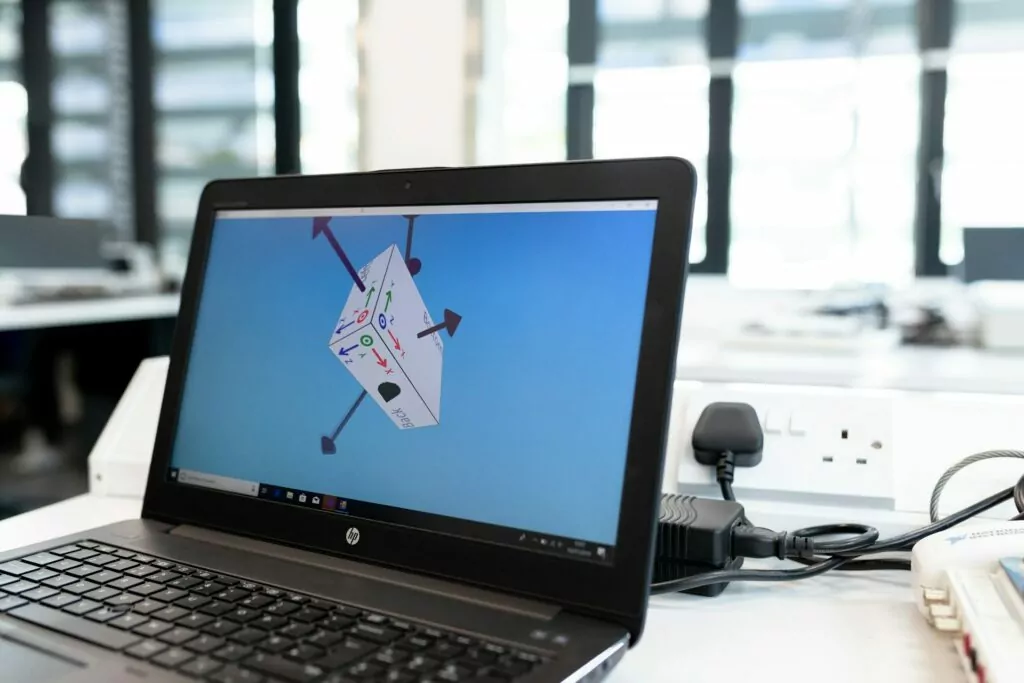In today’s rapidly evolving digital landscape, small and medium-sized enterprises (SMEs) are no longer under the radar of cybercriminals. These businesses are often seen as attractive targets due to perceived weaker defences compared to large corporations. The consequences of a cyberattack can be devastating, from financial losses to long-lasting reputational damage. However, by adopting a proactive approach to cybersecurity, SMEs can significantly reduce their risk of falling victim to such threats.
This blog outlines 10 essential cybersecurity best practices that every SME should implement. These actionable steps can help you strengthen your organisation’s cyber resilience, protect sensitive data, and ensure business continuity.
1. Employee Training and Awareness
The most common entry point for cyberattacks is not some sophisticated hacking tool but the employees themselves. Phishing, social engineering, and inadvertent downloads of malware all stem from human error, which is why employee training is critical. Cybercriminals know this and increasingly target SMEs through schemes that exploit untrained or unaware staff.

Action Steps:
- Conduct Regular Training: Training should not be a one-time affair. Cyber threats are constantly evolving, so your staff must receive up-to-date information about new scams and vulnerabilities. Tailor your training to different roles within your organisation. For example, your finance team may be more prone to business email compromise scams, while your marketing team may encounter phishing attempts through social media.
- Phishing Simulations: Consider running phishing simulations to test your staff’s response to phishing emails. This not only highlights potential areas for improvement but also makes employees more vigilant in their day-to-day activities.
- Clear Reporting Channels: Ensure that there are clear channels for reporting suspicious activity. Often, employees may be unsure of whom to contact or may be afraid of reporting a potential mistake. Encourage an open and blame-free environment where cybersecurity concerns are taken seriously.
In addition to this, fostering a company-wide culture that prioritises cybersecurity can reduce risks. When employees recognise their role in defending the company, they’re less likely to make mistakes that can lead to costly breaches.
2. Implement Strong Password Policies
Weak passwords are akin to leaving the front door to your business unlocked. Cybercriminals often use automated tools to guess passwords, known as brute force attacks, or simply gain access through poor password hygiene. For SMEs, password strength must be a cornerstone of your cybersecurity strategy.

Action Steps:
- Enforce Password Complexity: Require passwords to be at least 12 characters long and include a mix of upper- and lowercase letters, numbers, and special characters. Simplicity is the enemy of security, and passwords like ‘123456’ or ‘password’ should never be allowed.
- Password Manager Implementation: Encourage the use of a password manager. These tools generate and store complex passwords securely, eliminating the need for employees to memorise multiple passwords or, worse, write them down.
- Multi-Factor Authentication (MFA): Two-factor authentication adds a second layer of security, often in the form of a one-time code sent to a mobile device. This ensures that even if a password is compromised, a second factor is required for access.
Furthermore, you should implement a policy that requires periodic password changes, especially for critical systems. Though some argue that frequent password changes can lead to poor practices (such as choosing weaker passwords), pairing this with MFA and using a password manager mitigates these risks.
3. Use Firewalls and Antivirus Software
Think of a firewall as your first layer of defence against external threats. It acts as a gatekeeper, monitoring incoming and outgoing network traffic and blocking potentially harmful data from entering your system. Paired with antivirus software, firewalls help ensure that malware and other malicious activities are stopped before they cause damage.

Action Steps:
- Set Up Network Firewalls: Ensure your company has a firewall in place to protect the network perimeter. It’s also important to configure internal firewalls to separate sensitive data and systems, reducing the potential damage if a breach occurs.
- Use Endpoint Protection: Equip all devices, from workstations to mobile devices, with endpoint security solutions. These solutions typically include antivirus, anti-malware, and firewall protections, which provide an additional security layer for individual devices.
- Regular Updates and Patching: Both firewalls and antivirus software need regular updates to keep up with new threats. Malware evolves constantly, and outdated security software can leave your systems vulnerable.
In addition to traditional firewalls, SMEs can also benefit from Web Application Firewalls (WAFs), especially if they host websites or web applications. These firewalls help protect against common web-based attacks such as SQL injections and cross-site scripting.
4. Regular Data Backups
Data loss can happen for many reasons—ransomware attacks, hardware failures, or even human error. When it does, the consequences can be dire, especially if your business relies on this data for daily operations. Having a robust backup strategy ensures that even if data is lost, your business can recover with minimal disruption.

Action Steps:
- Backup Frequency: Aim to back up your business-critical data daily. If daily backups aren’t feasible, establish a schedule that ensures minimal data loss in the event of a breach. Weekly full backups combined with daily incremental backups can offer a good balance between resource use and recovery needs.
- Offsite and Cloud Backups: It’s important to store backups in more than one location. Use both onsite (e.g., external hard drives) and offsite solutions, such as cloud-based storage, to ensure redundancy. Cloud backups are particularly useful as they offer rapid recovery options and are often encrypted for extra security.
- Test Your Backups: Regularly test your backups by performing a full restoration to ensure they’re functioning properly. A backup is only useful if it can be restored quickly and completely in the event of a disaster.
An often overlooked aspect of the backup strategy is ensuring that the backup data itself is secure. Implement encryption and access controls to ensure that even if the backup is compromised, the data cannot be easily accessed by attackers.
5. Keep Software and Systems Updated
Outdated software is a hacker’s dream. Unpatched vulnerabilities provide cybercriminals with an easy way into your systems, making regular software updates one of the most basic but effective ways to enhance your security posture. For SMEs, who may not have the resources for dedicated IT staff, this is especially important.

Action Steps:
- Automate Software Updates: Enable automatic updates for all software, including operating systems, web browsers, and applications. This ensures that your systems are always protected against the latest threats.
- Patch Management Strategy: Implement a formal patch management process to track and apply critical updates. This includes not only operating systems but also third-party applications, plugins, and hardware firmware.
- Update Legacy Systems: If your business relies on legacy systems that are no longer supported by the vendor, consider replacing them or isolating them from the rest of the network. Unsupported systems are particularly vulnerable because they no longer receive security patches.
Furthermore, it’s important to stay informed about vulnerabilities in widely used software. Cybercriminals are quick to exploit known vulnerabilities in popular software like Microsoft Office or Adobe products, so prompt patching is key to mitigating these risks.
6. Encrypt Sensitive Data
Encryption is a fundamental tool for protecting your company’s sensitive information. Whether it’s customer data, financial records, or intellectual property, encryption ensures that even if your data falls into the wrong hands, it cannot be easily read or misused.
Action Steps:
- Full-Disk Encryption: Implement full-disk encryption on all company devices, including laptops and mobile phones. This ensures that if a device is lost or stolen, the data remains inaccessible without the correct decryption key.
- Encrypt Data in Transit and at Rest: Use encryption protocols such as SSL/TLS to protect data being transmitted over the internet, whether via email, cloud storage, or internal networks. Similarly, ensure that data stored on servers or backup systems is encrypted.
- Encryption Key Management: Properly manage your encryption keys, ensuring they are securely stored and regularly rotated. A compromised key can render your encryption useless, so keys must be handled with care.
In addition to encrypting sensitive business data, SMEs should also consider encrypting employee communications. Using secure email services or encrypted messaging platforms can protect sensitive conversations from being intercepted by attackers.
7. Develop an Incident Response Plan
No cybersecurity strategy is complete without an incident response plan. This plan outlines the steps your business will take in the event of a cyberattack or data breach, ensuring that your team can act swiftly to mitigate damage and recover quickly.

Action Steps:
- Document Roles and Responsibilities: Your incident response plan should clearly define the roles and responsibilities of key personnel during a cybersecurity incident. This includes who will communicate with stakeholders, who will handle technical remediation, and who will contact law enforcement if necessary.
- Regular Drills: Run regular incident response drills to simulate real-life cyberattacks. This helps employees become familiar with their roles and responsibilities during an incident, reducing panic and confusion when a real attack occurs.
- Post-Incident Review: After an incident has been resolved, conduct a post-mortem analysis to identify what went wrong, what was handled well, and how your response plan can be improved in the future.
A well-prepared incident response plan can be the difference between a minor incident and a full-scale disaster. Regular updates and testing of the plan are crucial to ensure it remains effective as new threats emerge.
8. Secure Mobile Devices
Mobile devices have become indispensable tools for business, but they also pose significant security risks. SMEs need to ensure that mobile devices used for work purposes are properly secured, especially if employees are working remotely or using personal devices for work tasks.

Action Steps:
- Implement Mobile Device Management (MDM): Use an MDM solution to enforce security policies on all mobile devices used within the organisation. This includes requiring password protection, encrypting data, and enabling remote wipe functionality.
- Restrict Access to Sensitive Data: Ensure that sensitive data can only be accessed through secure channels, such as VPNs or dedicated apps, rather than via unsecured mobile browsers or public Wi-Fi networks.
- Monitor for Unauthorised Apps: Regularly review the apps installed on work devices to ensure that no unauthorised or potentially malicious software is present. Encourage employees to only download apps from trusted sources.
The risks associated with mobile devices are particularly high due to the ease with which they can be lost or stolen. By implementing strong security policies, SMEs can mitigate these risks and ensure that mobile devices remain a secure extension of their IT infrastructure.
9. Control Access to Data
Not every employee needs access to every piece of company data. By limiting access based on roles and responsibilities, you can minimise the risk of insider threats and reduce the likelihood of accidental data breaches. This principle, known as the principle of least privilege (PoLP), ensures that employees can only access the information necessary to perform their jobs.

Action Steps:
- Implement Role-Based Access Controls (RBAC): Use RBAC to restrict access to sensitive data based on job function. For example, only finance personnel should have access to financial records, and only HR should have access to employee information.
- Monitor Access Logs: Regularly review access logs to track who is accessing sensitive data and when. This can help you detect unusual or unauthorised access attempts and act quickly to mitigate potential risks.
- Review and Update Permissions Regularly: Conduct regular audits of employee access privileges to ensure that permissions are still relevant. As employees change roles or leave the company, their access to sensitive data should be adjusted accordingly.
In addition to RBAC, SMEs can benefit from using multifactor authentication (MFA) to secure access to sensitive data. This ensures that even if login credentials are compromised, additional verification is required before data can be accessed.
10. Monitor and Audit Systems Regularly
A strong cybersecurity posture isn’t something you achieve once—it requires continuous monitoring and regular auditing. Proactively monitoring your systems for suspicious activity helps you detect potential threats before they cause significant damage. Regular audits, meanwhile, allow you to assess the effectiveness of your security controls and identify areas for improvement.
Action Steps:
- Set Up Automated Monitoring Tools: Use automated tools to monitor network traffic, detect unusual behaviour, and flag potential threats in real-time. This could include everything from monitoring login attempts to tracking changes in file integrity.
- Conduct Regular Cybersecurity Audits: Schedule periodic audits of your entire IT infrastructure to assess your security defences. These audits should evaluate whether your firewalls, encryption protocols and other controls are up to date and functioning as intended.
- Review Audit Logs: Keep detailed audit logs of all significant system events, including access to sensitive data, configuration changes, and software updates. These logs provide valuable information in the event of a breach and can help you identify exactly what went wrong.
By combining continuous monitoring with regular audits, SMEs can stay one step ahead of cyber threats. Rather than reacting to attacks after they occur, proactive monitoring allows businesses to identify and mitigate risks before they cause harm.
Implementing these 10 cybersecurity best practices is essential for protecting your SME against the ever-growing range of cyber threats. From employee training and strong password policies to encryption and incident response planning, these steps will go a long way in ensuring the security of your business data and systems.
While no security system is foolproof, taking proactive measures can drastically reduce your vulnerability to cyberattacks. By fostering a culture of cybersecurity and staying vigilant, you can minimise risks and focus on what matters most: growing your business.
Need Help?
If you don’t know about a threat, you cannot act. SOS Intelligence can be your eyes and ears on the dark web, providing digital risk monitoring to make sure you have the right intelligence, when you need it, to take action to protect your business.
Photos by Andrea De Santis, Ofspace LLC, rc.xyz NFT gallery, Fusion Medical Animation, Photo by Luke Chesser, William Hook, Connor Williams, Samsung Memory, ThisisEngineering on Unsplash.

